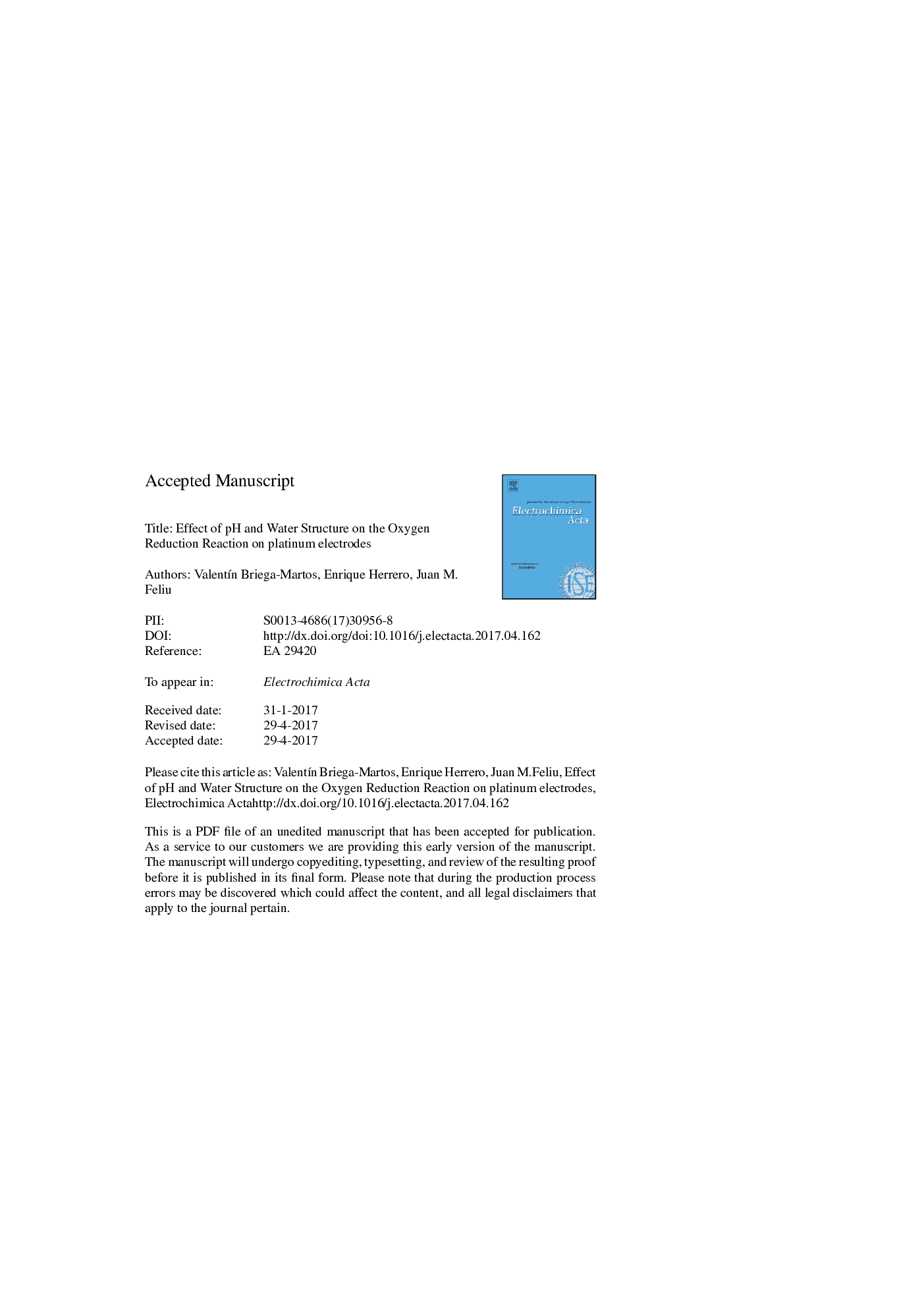| Article ID | Journal | Published Year | Pages | File Type |
|---|---|---|---|---|
| 4767039 | Electrochimica Acta | 2017 | 26 Pages |
Abstract
The oxygen reduction reaction (ORR) at different pH values has been studied at platinum single crystal electrodes using the hanging meniscus rotating disk electrode (HMRDE) configuration. The use of NaF/HClO4 mixtures allows investigating the reaction up to pHÂ =Â 6 in solutions with enough buffering capacity and in the absence of anion specific adsorption. The analysis of the currents shows that the kinetic current density measured at 0.85Â V for the Pt(111) electrode follows a volcano curve with the maximum located around pHÂ =Â 9. This maximum activity for pHÂ =Â 9 can be related to the effects of the electrode charge and/or water structure in the ORR. On the other hand, the catalytic activity for the other basal planes shows a monotonic behavior with a small dependence of the activity with pH. For stepped surfaces with (111) terraces, the behavior with pH changes gets closer to that of the Pt(111) surface as the terrace length increases. Additionally, the ORR curves show a dependence of the limiting diffusion current with pH. It is observed that the limiting current density diminishes as the pH increases in a potential region where hydrogen peroxide is readily reduced. These results suggest the existence of a bifurcation point in the mechanism previous to peroxide formation, in which OOH
- is proposed as the bifurcation intermediate. The reduction of OOH
- requires proton addition and would be more difficult at neutral pH values, justifying the diminution of the limiting currents.
- is proposed as the bifurcation intermediate. The reduction of OOH
- requires proton addition and would be more difficult at neutral pH values, justifying the diminution of the limiting currents.
Related Topics
Physical Sciences and Engineering
Chemical Engineering
Chemical Engineering (General)
Authors
ValentÃn Briega-Martos, Enrique Herrero, Juan M. Feliu,
